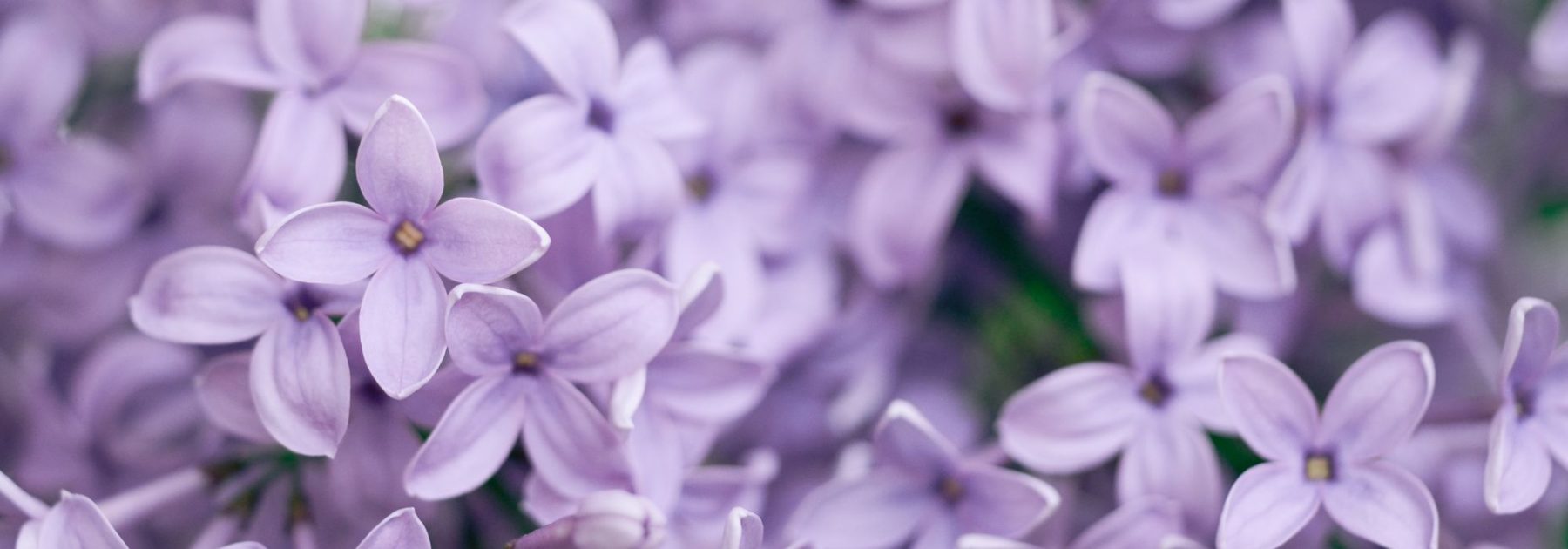
What to Plant in Clay-Limestone Soil? Advice and Suitable Plants Clay-limestone soil can be challenging for gardeners, but with the right approach, it can become a fertile ground for many beautiful and productive plants. Here are some tips and plant suggestions to help you make the most of this soil type. ### Understanding Clay-Limestone Soil Clay-limestone soil is heavy, retains moisture, and can become compacted, making it difficult for roots to penetrate. However, its alkaline nature (due to limestone) also means it is rich in minerals, benefiting certain plants. ### Tips for Gardening in Clay-Limestone Soil 1. **Improve Drainage** – Incorporate organic matter like compost or well-rotted manure to break up the clay and enhance soil structure. 2. **Avoid Overwatering** – Clay soil holds water, so be cautious not to drown plant roots. 3. **Choose the Right Plants** – Opt for species that thrive in heavy, alkaline conditions. ### Plants Well-Suited to Clay-Limestone Soil #### Ornamental Plants - **Lavandula angustifolia** (English Lavender) – Loves well-drained, alkaline soil. - **Buxus sempervirens** (Boxwood) – Tolerates heavy soil and limestone. - **Rosemary (Rosmarinus officinalis)** – Thrives in dry, chalky conditions. #### Fruit Trees & Shrubs - **Apple Trees (Malus domestica)** – Many varieties adapt well to clay-limestone soil. - **Viburnum opulus** (Guelder Rose) – Hardy and suited to heavy soils. #### Perennials & Bulbs - **Iris germanica** (Bearded Iris) – Prefers well-drained, slightly alkaline soil. - **Allium** (Ornamental Onion) – Flourishes in limestone-rich ground. By selecting the right plants and improving soil structure, you can create a thriving garden even in clay-limestone conditions. Happy gardening!
understanding this type of soil for better gardening
Contents
Before choosing which plants to install in your garden, it’s essential to know the nature of your soil. The clay-limestone soil is a fairly common type of soil in France and Belgium, but not always easy to tame at first glance. It is mainly composed of clay (which gives a heavy, sticky texture) and limestone (which makes the soil alkaline, meaning with a high pH).
This soil has a fine and compact texture, meaning it retains water well but can also become waterlogged in winter and hard as stone in summer. The limestone, meanwhile, affects the availability of certain nutrients in the soil, which can be problematic for so-called “acidophilous” plants that prefer more acidic soil.
Despite these constraints, it remains very fertile and suitable for many plants, provided you choose them wisely. Knowing your soil type is therefore essential for smart planting and avoiding disappointment. By adapting your choices, you’ll get a healthier, more beautiful garden… and a less temperamental one!
The Strengths and Challenges of Clay-Limestone Soil
Clay-limestone soil has serious advantages for gardeners. It is generally rich in nutrients and offers good natural fertility, which can promote healthy plant growth. Thanks to the presence of clay, it retains water and nutrients well, preventing deficiencies. But beware, this type of soil also presents some challenges!
It tends to be heavy and compact, especially after rain. In winter, it can become waterlogged, and in summer, it hardens like stone, making planting more tricky. Moreover, its richness in limestone makes it rather alkaline (high pH), which isn’t suitable for all plants, especially those that prefer acidic soil.
How to improve clay-limestone soil?
Fortunately, clay-limestone soil can definitely be improved to make it easier to work with and more welcoming for a wide range of plants. The secret is to aerate it regularly (with a garden fork, for example) and to amend it. Adding organic matter (such as compost, well-rotted manure or potting soil) will nourish the soil and loosen it.
And to crown it all, don’t forget mulching! A good layer of mulch (dead leaves, straw, dried grass clippings…) helps retain moisture, prevent crusting on the surface, and protect plant roots during periods of heat or cold.
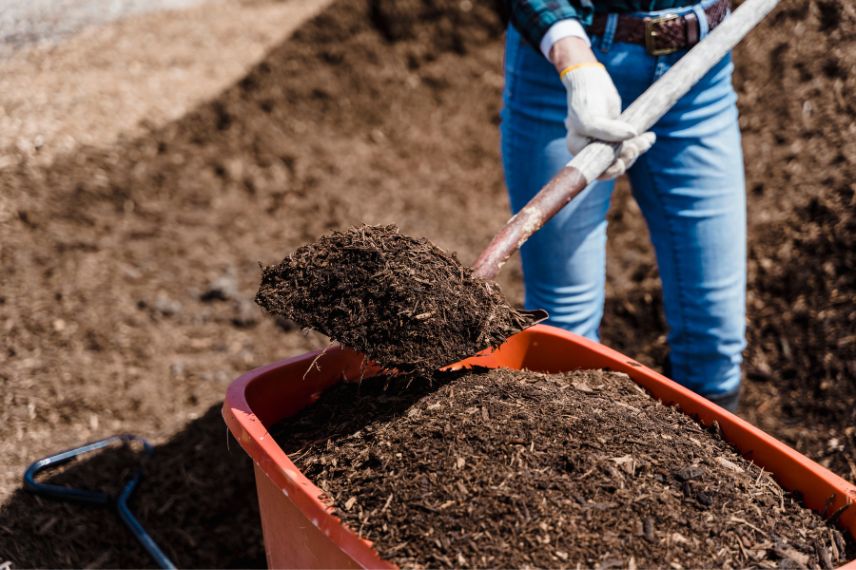
Adding well-rotted compost to your soil helps improve it.
Practical Tips for Successful Planting in Clay-Limestone Soil
Preparing the soil before planting
Clay-limestone soil can be heavy and compact: it is therefore important to loosen it deeply before planting. Use a digging fork or organic fork to aerate it without overly turning the soil layers. If the soil retains too much water, consider adding some gravel at the bottom of the planting hole to improve drainage or plant on a mound for plants that prefer well-drained soil.
Tip: add compost or well-rotted manure to enrich the soil and improve its structure.
Water moderately
Even though clay retains water well, this is no reason to neglect watering, especially at first. The ideal is to water regularly, but without excess. Overly wet soil can quickly suffocate the roots. In summer, good mulching helps retain moisture and reduces the need for frequent watering.
Adjust maintenance according to the seasons
-
In spring: lightly hoe the surface to aerate, weed and mulch around young plants.
-
In summer: monitor watering, especially during heatwaves. Mulching becomes your best ally.
-
In autumn: add compost to enrich the soil and protect the roots before winter.
-
In winter: avoid working the soil when it is waterlogged, as this would make it even more compact.
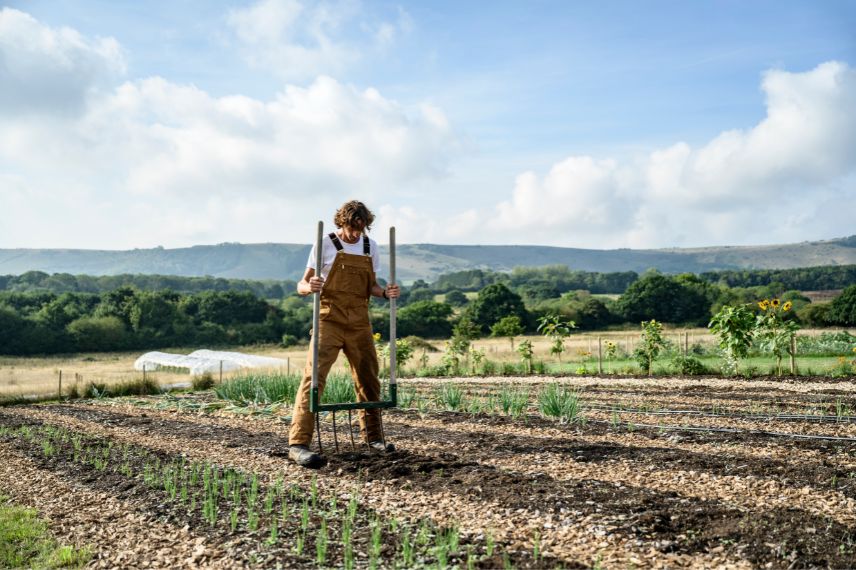
The organic fork allows you to work the soil without mixing the layers.
Plants that thrive in this type of soil
Trees and Bushes
| ? Trees | ? Ornamental Bushes | ? Hedge Bushes |
|---|---|---|
| Downy Oak | Lilac (Syringa vulgaris) | Privet (Ligustrum) |
| Serviceberry | Weigela | Laurustinus (Viburnum tinus) |
| Judas Tree (Cercis) | Spirea | Elaeagnus |
| Hawthorn | Buddleia | Guelder Rose |
| Black Locust (Robinia pseudoacacia) | Roses | Cotoneaster |
| Honey Locust (Gleditsia triacanthos) | Tree Mallow | Forsythia |
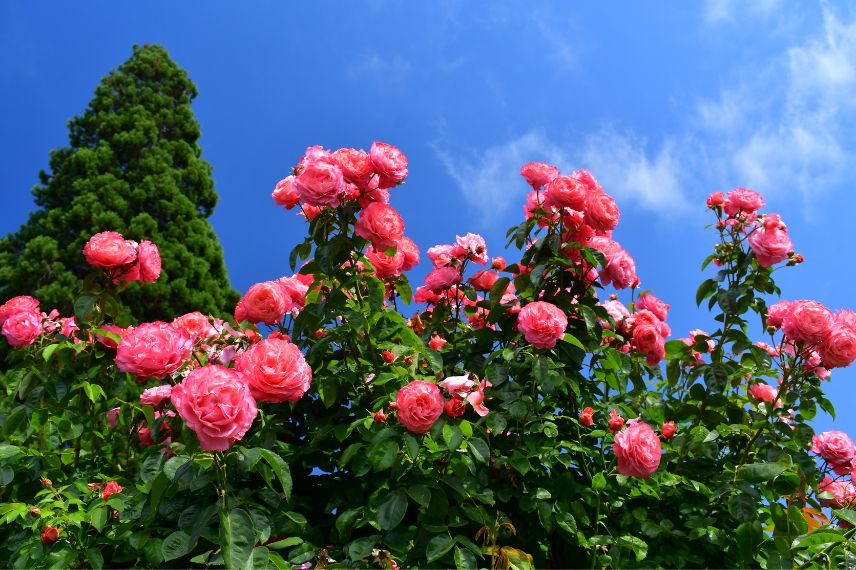
Roses are kings in clay-limestone soil. Don’t forget them!
Perennials
| ? Groundcover Perennials | ? Shade Perennials | ☀️ Sun Perennials |
|---|---|---|
| Hardy Geranium | Hosta | Yarrow |
| Bugleweed (Ajuga reptans) | Coral Bells | Common Sage |
| Spotted Deadnettle | Male Fern (Dryopteris filix-mas) | Lavender |
| Lesser Periwinkle (Vinca minor) | Barrenwort | Purple Coneflower |
| Snow-in-Summer (Cerastium tomentosum) | Asarum europaeum | Phlomis russeliana |
| Lady’s Mantle (Alchemilla mollis) | Brunnera macrophylla | Stachys byzantina (Lamb’s Ear) |
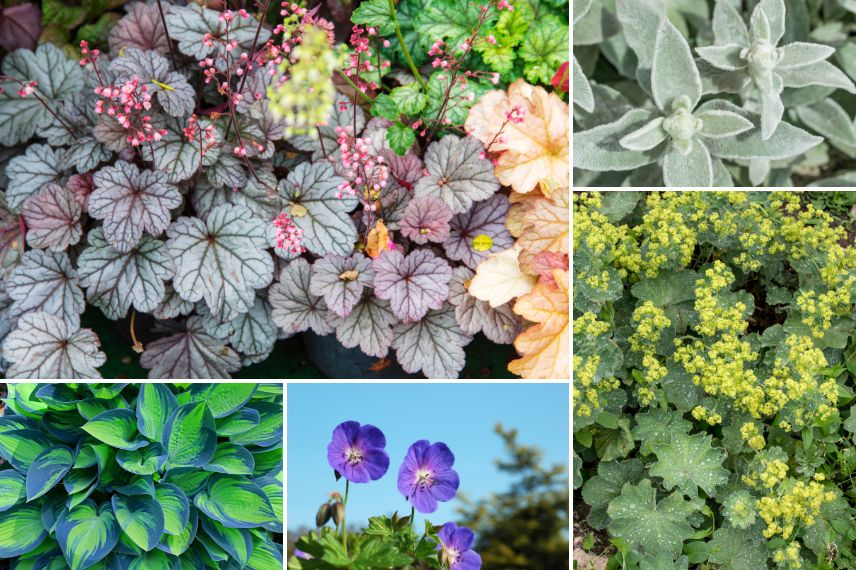
Coral Bells, Lamb’s Ear, Hostas, Hardy Geraniums or Lady’s Mantle. The choice is wider than you might think.
Climbing Plants
To green up a wall or create a beautiful vertical flowering hedge in clay-limestone soil, several climbing plants adapt perfectly to these sometimes heavy and chalky conditions. Honeysuckle (Lonicera sp.) is an excellent choice: it is fragrant, hardy and undemanding about soil type. The Virginia Creeper, whether five-leaved (Parthenocissus quinquefolia) or tricuspidata, is ideal for quickly covering a wall with its spectacular autumn foliage. Climbing roses, especially among old varieties, thrive particularly well in well-prepared chalky soils. For a touch of sunshine and exoticism, the Trumpet Vine (Campsis radicans) is perfect: it loves well-drained soils and warm exposures. The Ivy (Hedera helix), robust and evergreen, is also a good ally, even in shade, and has no trouble adapting to chalky soil. Finally, Hop (Humulus lupulus), with its twining stems and generous foliage, grows vigorously and adds a lovely rustic touch to the garden.

Want a climbing plant for heavy chalky soil? Opt for Virginia Creeper or Hop.
Annuals and Biennials
Poppies, with their wild and airy look, easily find their place in this type of soil, especially in sunny spots. Love-in-a-Mist, with their delicate flowers and fine foliage, also appreciate well-nourished, even chalky soils. Hollyhocks, often considered biennials, love deep, rich soils typical of clay-limestone earth. For summer blooms, Zinnias and Cosmos offer generous flowering while tolerating this soil type well, provided it’s reasonably well-drained.
Vegetable Garden
Growing a vegetable garden in clay-limestone soil, which is heavy and alkaline, may seem challenging at first. The soil sticks to boots in winter and cracks in summer. Yet with some preparation and the right vegetable choices, this soil type can become very productive. For example, garlic and shallots, which love well-mineralised soils, thrive particularly well here. Cabbage, especially kale or headed cabbage, also appreciates the richness of this deep soil. Leek, sturdy and undemanding, grows willingly in well-loosened clay soils. Peas and broad beans benefit from the lime for good flowering and fruiting, as long as the soil is sufficiently drained. Finally, beetroot, with their fleshy roots, appreciate the depth and natural fertility of well-prepared clay-limestone soil.
Herbs
Rosemary, in addition to resisting drought, thrives in clay and chalky soils, provided it’s planted in light or raised ground. Common Sage, robust and decorative, also appreciates rich but well-drained soils, perfect for this terrain type. Oregano, with its strong fragrance and small melliferous flowers, is perfectly at home in chalky soil, even dry in summer. For slightly cooler or partially shaded areas, mint establishes easily in clay soil, which it prefers rather moist. Similarly, Lemon Balm, with its sweet lemony scent, grows without issue in clay-limestone soil, especially if some moisture is maintained around it.
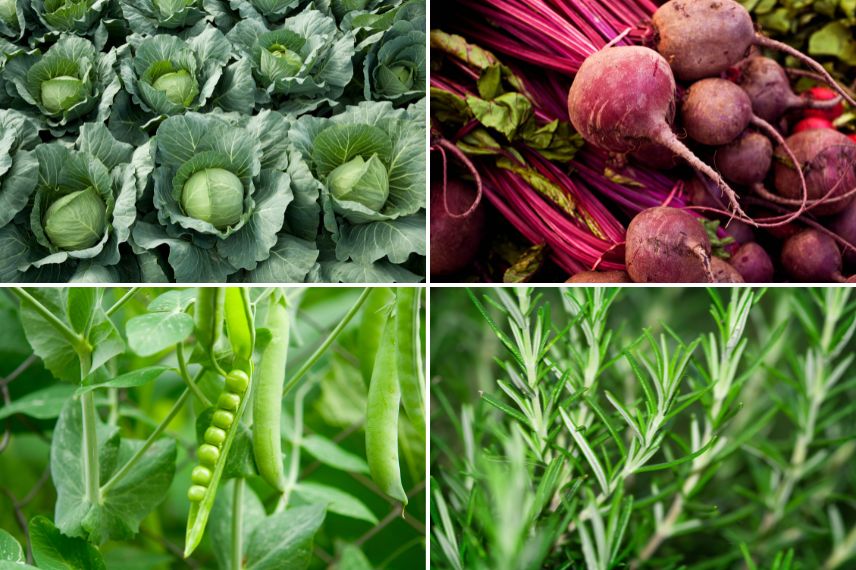
Cabbages, beetroot, peas and rosemary tolerate heavy alkaline soil.
Fruit Trees
Apple Trees adapt very well here, especially certain hardy varieties that appreciate this soil’s richness. Plum Trees, particularly ‘Greengage’ or Mirabelle, love deep soils, even heavy ones, as long as they’re not constantly waterlogged. Grapevines, great lovers of chalky soils, develop particularly well here, producing grapes full of character.
Plants to avoid or monitor in clay-limestone soil
Even though clay-limestone soil is fertile, not all plants thrive in it. In particular, those that prefer acidic soils (known as heather soil plants) can quickly suffer in limestone soil. They often show signs of chlorosis : the leaves turn yellow between the veins, and the plant gradually declines, even with proper watering.
Here is a list of plants to avoid or to plant with caution, for example in pots with an appropriate acidic substrate:
| ? Plant name | ? Why it dislikes limestone |
|---|---|
| Azalea | Requires acidic soil, prone to chlorosis in limestone soil |
| Rhododendron | Its shallow roots quickly suffer in limestone |
| Camellia | Highly demanding regarding soil acidity, difficult to adapt to limestone ground |
| Hydrangea (Hydrangea) | Changes colour based on pH; fades and weakens in limestone soil |
| Heather | The quintessential acid-loving plant, cannot tolerate limestone |
| Pieris (Japanese Andromeda) | Highly ornamental foliage, but sensitive to high pH |
| Skimmia | Beautiful evergreen plant, but intolerant of limestone |
| Kalmia | Less well-known but highly demanding regarding acidic soil |
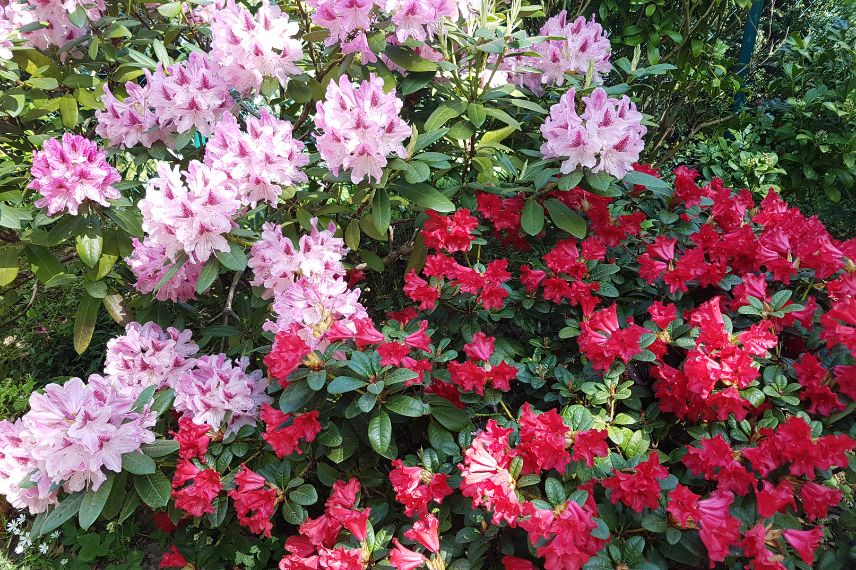
Forget azaleas and rhododendrons in clay-limestone soil! They will never thrive there.
- Subscribe!
- Contents
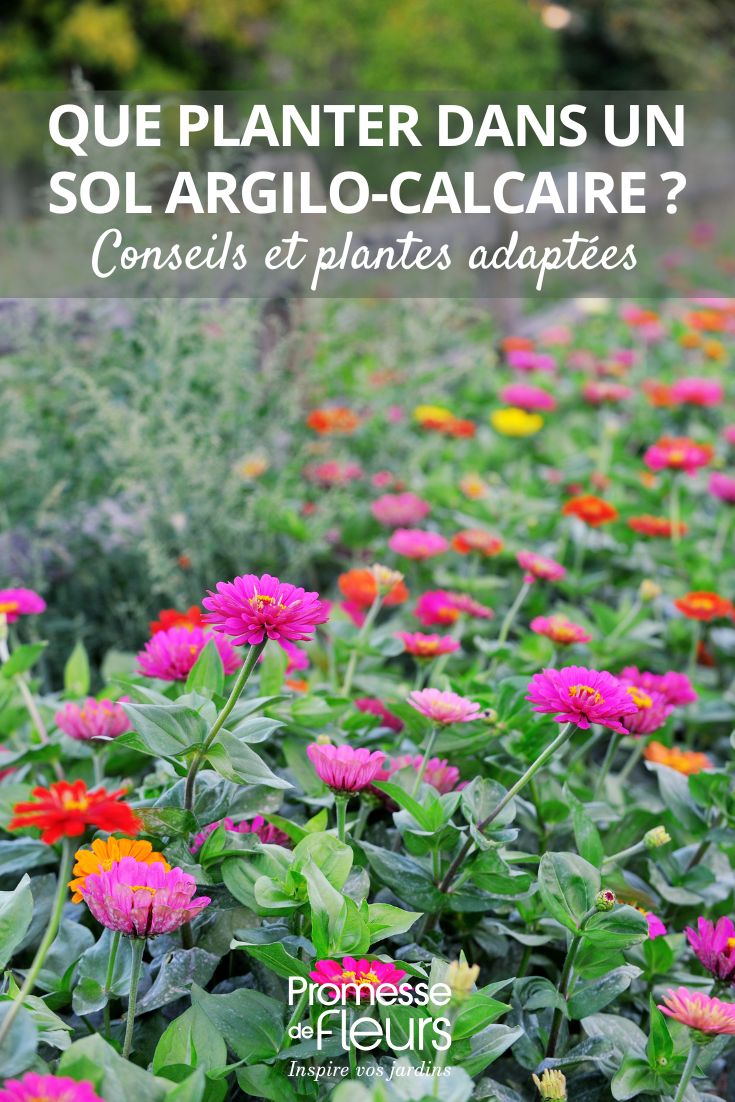


































Comments